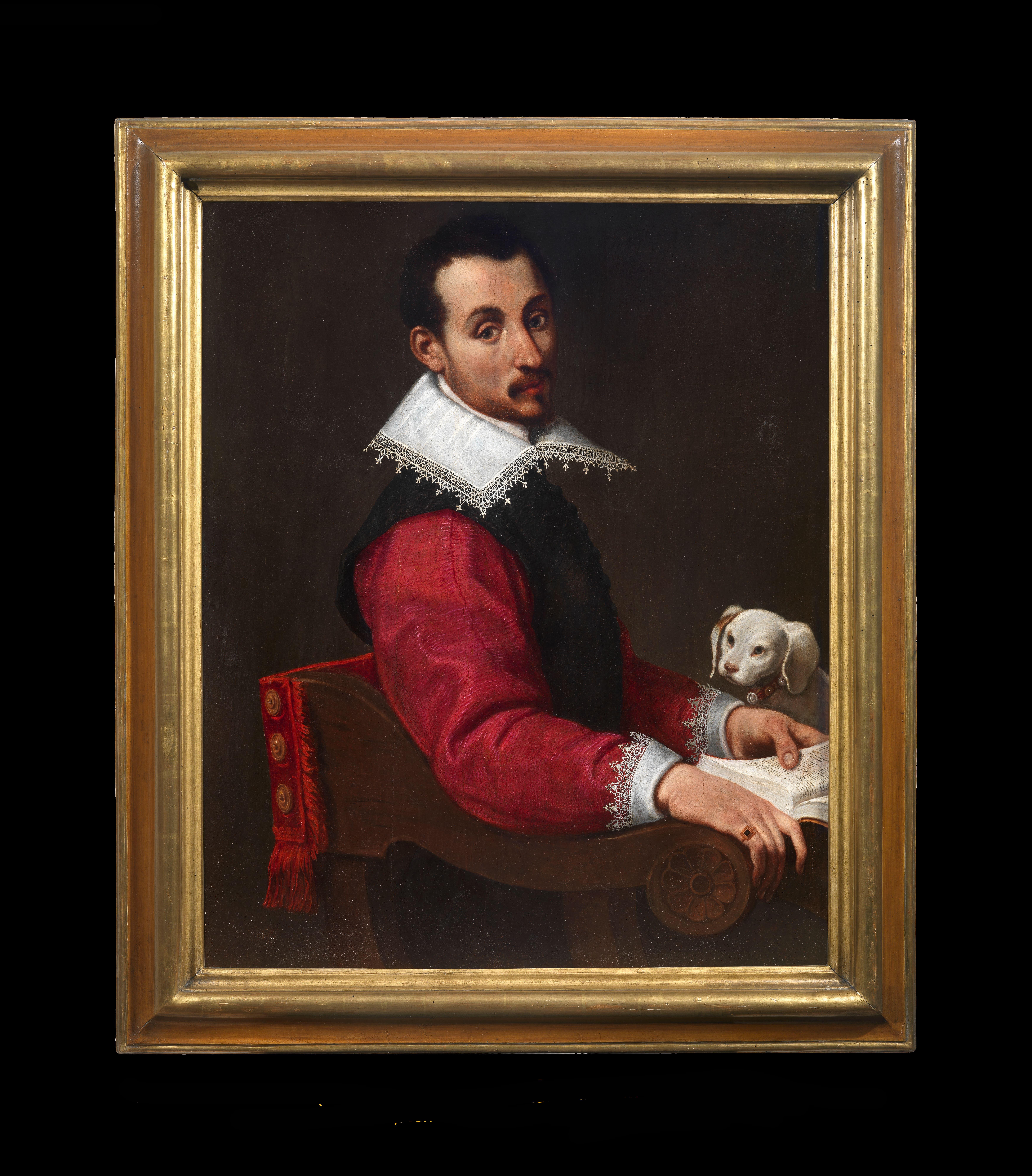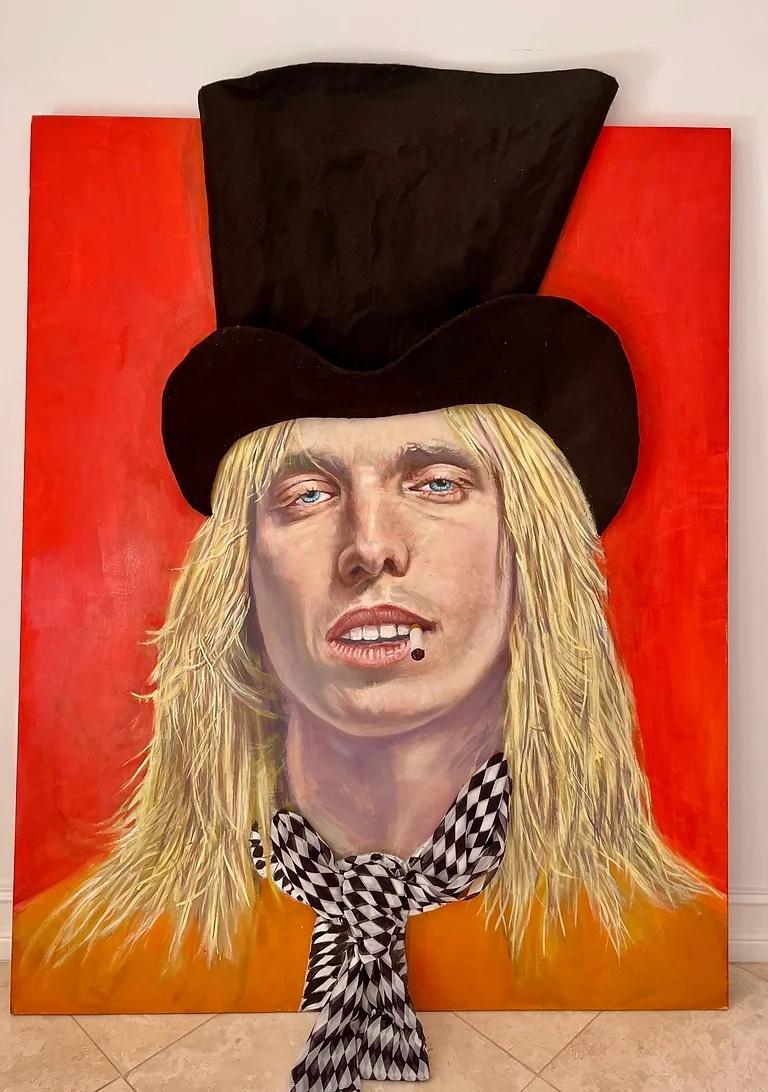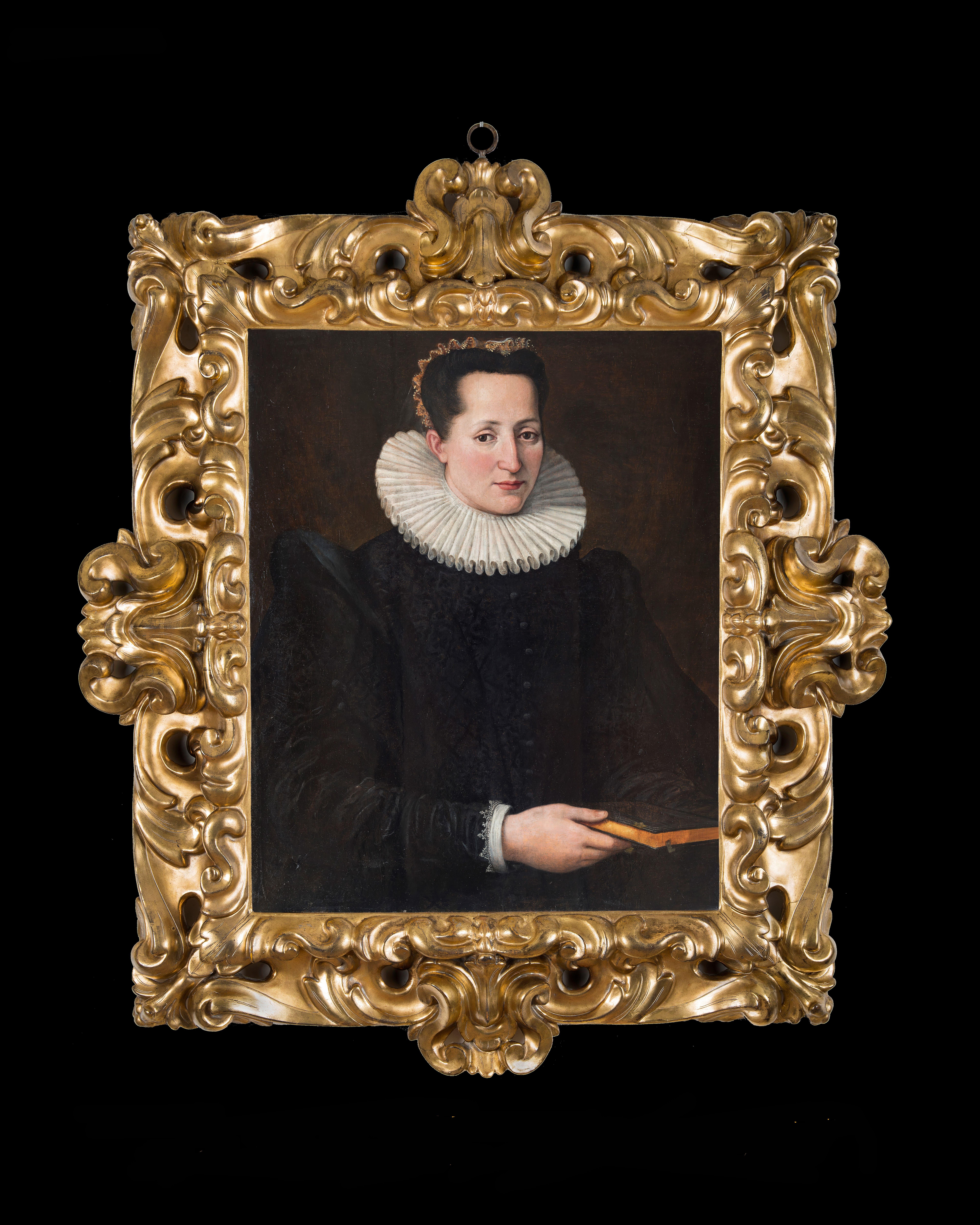Items Similar to By The Light Of The Lantern, 19th Century European Oreintalist School
Want more images or videos?
Request additional images or videos from the seller
1 of 14
UnknownBy The Light Of The Lantern, 19th Century European Oreintalist School
About the Item
By The Light Of The Lantern, 19th Century
European Oreintalist School
Large 19th Century European Orientalist portrait of a woman at night illuminated by her lantern, oil on panel. Excellent quality and condition portrait of the young woman with the moon in the distance holding forth a lantern that lights her way. Exceptional nocturnal/candlelit scene possibly of a young shepherdess travelling the desert at night. Framed
Measurements: 32" x 24" framed approx
- Dimensions:Height: 32 in (81.28 cm)Width: 24 in (60.96 cm)
- Medium:
- Period:
- Condition:
- Gallery Location:Blackwater, GB
- Reference Number:
About the Seller
4.8
Platinum Seller
These expertly vetted sellers are 1stDibs' most experienced sellers and are rated highest by our customers.
Established in 2008
1stDibs seller since 2021
197 sales on 1stDibs
Typical response time: 1 hour
- ShippingRetrieving quote...Ships From: Blackwater, United Kingdom
- Return PolicyA return for this item may be initiated within 14 days of delivery.
More From This SellerView All
- The Blood Of Christ, The Milk Of The Madonna, 16th CenturyLocated in Blackwater, GBThe Blood Of Christ, The Milk Of The Madonna, 16th Century circle of Adriaen Isenbrandt (1480-1551) Huge 16th Century Flemish old Master depiction of...Category
16th Century Portrait Paintings
MaterialsOil, Wood Panel
- The Livestock Market, 17th CenturyBy Karel BreydelLocated in Blackwater, GBThe Livestock Market, 17th Century School of Karel BREYDEL (1678-1733) - rare 17th Century Cattle/Livestock Market Fine large 17th century Dutch/Flemish livestock market landscape,...Category
18th Century Portrait Paintings
MaterialsPanel, Oil
- Portrait Of Jeanne III d'Albret (1528-1572), 16th CenturyLocated in Blackwater, GBPortrait Of Jeanne III d'Albret (1528-1572), 16th Century French School Court Portrait - oil on panel Fine 16th century French Old Master portrait of Jeanne III, Queen regent or Navarre, oil on panel. Rare and early depiction of the Queen regent in court attire by a French court painter circa 1550. Jeanne d"Albret married Antione De Bourbon to become the Duchess of Vendome. Her son Henri would be come Henri III...Category
16th Century Portrait Paintings
MaterialsPanel, Oil
- Portrait Of Baron Dudley North, 16th Century English SchoolLocated in Blackwater, GBPortrait Of Baron Dudley North, 16th Century English School Huge 16th Century Portrait of Dudley North, 3rd Baron North, attired for an Accession Day Tilt with a favour, traditiona...Category
16th Century Portrait Paintings
MaterialsOil, Panel
- Portrait Of King Edward VI (1537-1553) as Prince Of Wales, 16th CenturyLocated in Blackwater, GBPortrait Of King Edward VI (1537-1553) as Prince Of Wales, 16th Century English School - Oil on panel - circa 1547 Large 16th Century portrait of Edward VI as Prince Of Wales, oil...Category
16th Century Portrait Paintings
MaterialsWood Panel, Oil
- King Solomon Worshipping The Idols, 17th Century FRANS FRANCKEN II (1581-1642)By Frans Francken IILocated in Blackwater, GBKing Solomon Worshipping The Idols, 17th Century FRANS FRANCKEN II (1581-1642) - signed sales to $6,000,000 Large 17th Century biblical account of King Solomon worshipping the Idols, oil on panel Frans Francken. Excellent quality and condition Old Testament biblical scene on a cradled panel depicting the Idolatry of Solomon, son and successor of King David. Exceptional detail and would be enhanced with a light clean. Presented in an antique period frame. Signed. Measurements: 47" x 34" framed approx Artist Biography Frans Francken II or the Younger is the third in order of descent in the Francken family tree. Born in 1581, the son of Frans Francken I or the Elder, he was the brother of Thomas, born in 1574, of Hieronymous II, born in 1578 and died in 1623, and of Ambrosius II, the last in line, who died in 1632. Hieronymous II, who died at the age of 56, is only known for his painting Horatius Cocles at Sublicius Bridge. Frans the Younger was initially a pupil of his father, who was then at the height of his career. In his father's studio he imbibed all the teaching of the tradition of Frans Floris. He also spent long periods in Italy, where he familiarised himself in particular with the masters of the Venetian school. Such study in situ enabled him to break away from the well-worn methods of Flemish Italianism, as practised by his father and uncles. It is conceivable that the young artist met Rubens, who was in Italy at the time. In 1605, at the age of 24, on his return to Antwerp, Frans the Younger became a master in the Antwerp Guild of St Luke. In 1607 he married Elisabeth Placquet in Antwerp. Three sons and eight daughters resulted from this marriage. His children made up the fourth generation in the dynasty. Better known are Frans III (1607-1667) and Hieronymus, born in 1611. The latter had a son, Constantinus (1661-1717), who marks the end of the line. The family of Francken painters runs from 1520 to 1717. As one of the most active masters in Antwerp, Frans II was appointed dean of the guild in 1614. He was also a member of the Violette, a major literary association, for which he painted an award-winning symbolic coat of arms. He was intimate with the most celebrated artists, in particular van Dyck, who executed a very fine portrait of him, judging by the engraving by Willem Hondius and Pieter de Jode. It is also likely that he was on familiar terms with Rubens who was his near contemporary. He died in Antwerp on 6 May 1642 at the age of 61, outlived by both Rubens and van Dyck. The first securely dated work of Frans the Younger is Christ on the Cross from the gallery in Vienna, painted in 1606. Witches' Sabbath (Vienna) and The Works of Mercy (Antwerp) are dated 1607 and 1608 respectively. In these two latter works the painter proves himself adept at painting figures and allegorical scenes. The Works of Mercy represents various groups of figures, symbolising the different activities inspired by Christian charity. Paupers and beggars occupy the foreground, the ensemble being dominated by the figure of the glorious Christ. While Frans the Younger cannot be compared with the masters of this great first generation of Antwerp, which was illuminated and steered by the genius of Rubens, he does nevertheless merit attention. He succeeded in developing and bringing into fashion an anecdotal genre on a more modest scale, elements of which were to inform the last representatives of the Francken family for over a century. Frans the Younger was undoubtedly the most talented draughtsman in the family. While his art may be criticised for its lack of grandeur and solemnity, the execution shows great talent. His brush stroke was vigorous and his imagination, albeit restrained, was brilliant. His interest in tonal values was highlighted by his study and appreciation of his remarkable contemporaries. This enabled him to carry out landscapes and also fleshy figures, which made him altogether worthy of the brilliant period to which he belonged. While detail certainly preoccupied him, he treated it with intelligence and even esprit, as witnessed in The Parable of the Prodigal Son and A Prince's Visit to the Treasury of a Church(both in the Louvre). The scenes painted in grisaille, which surround the principal motif of the Prodigal Son, are characteristic of his style. He excelled in painting jewellery, ornaments, and textiles with shot silk effects. A large number of his figures inhabit the neutral backgrounds of the interiors of apartments and galleries. He carried out such work not only under his own auspices, but also for other artists, such as Peeter Neeffs, van Bassen, Josse de Momper...Category
17th Century Portrait Paintings
MaterialsWood Panel, Oil
You May Also Like
- Ritratto di Gentiluomo con caneLocated in Balerna, TIBartolomeo Passerotti ( Bologna 1529 – 3 giugno 1592) Ritratto di Gentiluomo con cane Olio su tavola, Sec. XVI, cm 84x69; con cornice 101x87 // Bartolomeo Passerotti (Bologna 1529...Category
16th Century Italian School Portrait Paintings
MaterialsOil, Panel
- Smoking Tom PettyBy Serge StrosbergLocated in West Palm Beach, FLTom Petty Fans! Welcome to Tom Petty Nation! This Original Oil, egg tempura, Enamel paint, glass, custom made felt hat, textile, metal mesh, on wood panel is a beautiful tribute to ...Category
21st Century and Contemporary Modern Portrait Paintings
MaterialsMetal, Enamel
- Portrait of Gentleman, Thomas Bruce, Earl of Elgin c.1638 Manor House ProvenanceLocated in London, GBTitan Fine Art present this picture which formed part of a historic collection of an English aristocratic family, Lord and Lady Sandys at their magnificent baroque and Regency Grade-...Category
17th Century Old Masters Portrait Paintings
MaterialsOil, Wood Panel
- Portrait of a Lady Diana Cecil, Countess of Elgin c.1638, Manor House ProvenanceLocated in London, GBTitan Fine Art present this picture which formed part of a historic collection of an English aristocratic family, Lord and Lady Sandys at their magnificent baroque and Regency Grade-...Category
17th Century Old Masters Portrait Paintings
MaterialsOil, Wood Panel
- Ritratto di NobildonnaLocated in Balerna, TISanti di Tito Ritratto di Nobildonna Olio su tavola, Sec. XVI, cm 74x61; con cornice 116x100x9 Con procedere degli studi su Santi di Tito, del quale è stata recentemente precisata la nascita fiorentina , si viene sempre più definendo come non solo una delle personalità più interessanti della scena artistica fiorentina, ma anche come il più interessante ritrattista cittadino della seconda metà del Cinquecento. L'attribuzione di questo ritratto al pittore, che nell'impresa dello Studiolo di Francesco I fu uno dei maggiori innovatori fra i giovani riuniti da Vasari e Borghini, appare subito evidente per l’inconfondibile disegno ovale e fermo del volto, reso con un incarnato compatto dai toni rosati che si accende di naturalistiche notazioni epidermiche ma anche di una puntuale figurazioni degli elmenti decorativi dell’abito e dell’acconciatura. Sempre coerente con i modi pittorici di Santi è poi la pittura compatta con la quale vengono definiti i piani semplificati del volto delle donna, che conservano una notazione di luce e di naturale sensibilità in linea con i dettami controriformati dei quali il pittore fu uno dei più fedeli osservanti nella scena fiorentina. Sempre tipica di Santi di Tito è poi la ferma e volumetrica rappresentazione del torso e dell’abito definito nei piccoli intagli della stoffa ma allo stesso tempo semplificato nei volumi delle maniche e del busto. Ancora di santi ci sembra la notazione luministica con la quale è rilevato il disegno dell’abito attraverso stesure compatte ma sottili e trasparenti, oppure è resa la gorgiera bianca che aggiunge una luce netta all’intero dipinto. Una simile scelta pittorica appare nel Ritratto di Guido Guardi coi figli, esposto alla mostra Il Cinquecento a Firenze, (Palazzo Strozzi, 21 settembre 2017 – 21 gennaio 2018, n. IV. 5, pp. 156-157), dove, pur in un ritratto maschile, Santi di Tito usa la medesima cifra formale nella resa dei volti e delle gorgiere. Pur nell'attenzione alle caratteristiche fisionomiche, Santi di Tito conserva, infatti, una cifra disegnativa sempre evidente e riconoscibile pur col passare degli anni, un carattere stilistico che sostiene, con volumi saldi, ogni sua differente prova pittorica. Ne sono un esempio dipinti quali il Ritratto di donna con Figlia, già in collezione Koelliker2, oppure il Ritratto di Lucrezia (Emilia) e Sinibaldo di Niccol Gaddi3, tutti databili agli anni settanta del Cinquecento proprio per la stereometrica definizione delle forma. Col passare degli anni, invece, tale carattere di ascendenza bronzinesca sembra cedere sempre più in favore di una pittura più morbida e sensibile, chiamata a raggiungere esiti di naturalezza sempre maggiore. Dipinto emblematico per seguire tale percorso rimane il già citato Ritratto di Guido Guardi con i figli , dove Santi di Tito ha effigiato il capofamiglia subito dopo il suo ritorno da Roma, fra il 1564 e il 1568, al tempo in cui il Guardi commission al pittore anche una pala con una Natività per la cappella di famiglia a San Giuseppe. L’uomo, seduto su uno scranno, sembra rimandare per la posa arcaizzante alla ritrattistica di primo Cinquecento, alla quale Santi di Tito s’ispira anche per le pieghe frante ma scultoree dell’abito. Sulla stessa tavola, probabilmente verso la fine degli anni settanta del Cinquecento, il pittore venne chiamato ad aggiungere le effigi di figli, quando probabilmente l’opera era già in cornice, e lo fece con una pittura più svolta e libera, in modo da raggiungere effetti naturalistici di maggiore sensibilità. Anche nel Ritratto di donna in esame, i volumi saldi e potenti della figura spiccano sul fondo monocromo della parete con un’evidenza che farebbe pensare alle figure eseguite dalla fine degli anni Settanta del Cinquecento, al pari, appunto dei due figli di Guido Guardi. Nato a Firenze nel 1536, Santi di Tito si form prima da Bastiano da Montecarlo per passare poi dal Bronzino, del quale conserv la preferenza per volumi luminosi e torniti, a cui aggiunse un'attenzione per la chiarezza compositiva e il naturalismo richiesti dai dettami della Controriforma, che lo portarono a guardare allo stile di Scipione Pulzone...Category
16th Century Italian School Portrait Paintings
MaterialsOil, Panel
- Portrait of a bearded man - Adriaen Thomasz. Key (c. 1544-1589)Located in Gent, BEOil on panel We are grateful to Koenraad Jonckheere for confirming the attribution after inspection of the original. He dates the work to circa 1570. The present portrait of a bearded man, arresting in its intimacy, capturing the contemplative gaze of the sitter, along with the intense naturalism with which his face is rendered, is an outstanding example of the oeuvre of the Antwerp master Adriaen Thomasz. Key. Attired in an expensive and modish ‘Burgundian black’ doublet...Category
16th Century Flemish School Portrait Paintings
MaterialsOil, Panel





